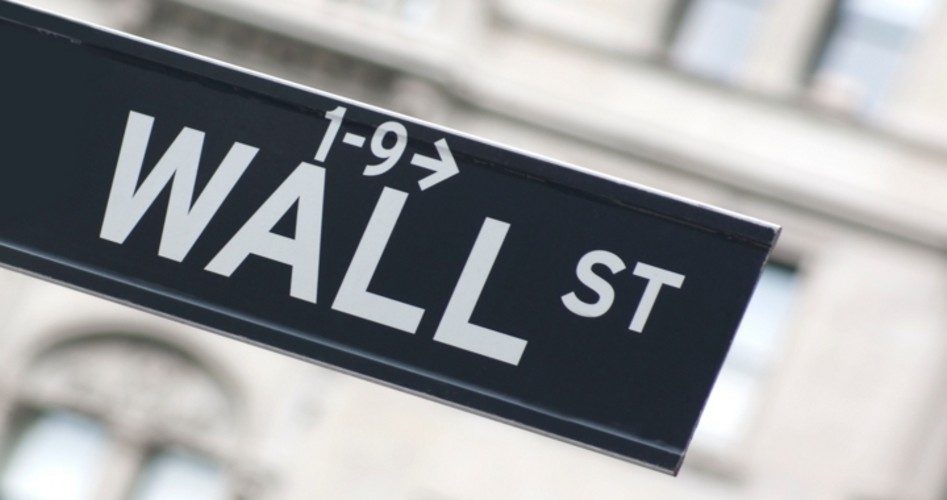
The Wall Street rollercoaster — down huge on Monday, up huge on Wednesday, decline on Thursday — is giving commentators, pundits, and forecasters heartburn. The Dow Jones Industrial Average (DJIA) surged more than 1,000 points on Wednesday, the first time in history, rebounding from a four-day selloff that took 4,000 points out of the Dow and put various blue-chip indexes on the verge of a bear market.
Street commentators searched high and low for the root cause or causes of the volatility. They ranged from concerns over the incipient trade war with China instigated by the president as he seeks to rebalance fair trade with that communist-controlled country, to the firing of his Secretary of State over U.S. troop withdrawals from Syria and Afghanistan. Pundits pointed to Treasury Secretary Steven Mnuchin’s attempt to calm the markets by calling big bank CEOs and reporting that all is well with their reserve ratios. This attempt backfired, especially when it was followed by reports of a gathering of the president’s “plunge protection team” consisting of Mnuchin, Fed Chairman Jerome Powell, the chair of the SEC Jay Clayton, and the head of the Commodity Futures Trading Commission, Christopher Giancarlo at the White House on Monday.
Blame for the volatility fell on the so-called government shutdown, which, in reality, affected very few people and impacted the economy not at all. The haggling over the funding for Trump’s wall also appeared on the list of worries driving the market, and its observers, crazy.
Technophobes blamed program trading (which involves the trading of massive “baskets” of stocks executed by computers programmed by “quants” to measure every move of every stock) and short-covering (by traders who made bets on the direction of the markets and then sold their positions when the markets went against their bets).
Also to blame was the end-of-year pension-plan “rebalancing,” the act by pension managers to have their portfolios appear at the end of the year to be holding winners, just in time for their annual reports to be sent to their plans’ participants.
The president came closest to the root cause of the volatility on Monday when he tweeted that “the only problem our economy has” is the Federal Reserve. On Tuesday he added that the Fed was “raising interest rates too fast because they think the economy is so good.”
The president is right about the economy, according to Gershon Distenfeld, the head of fixed income for the investment house AllianceBernstein: “There’s a lot of uncertainty in the short-term and that makes sense. We’re going to have a lot of volatility. But this case of ‘the world is coming to an end’ just given the fundamental data out there doesn’t make any sense.”
Indeed it doesn’t. Consumers set records during the holiday shopping season, spending their after-tax wage increases and enjoying their year-end tax-free bonus as gas prices at the pump are saving them 50 cents a gallon compared to a year ago.
The S&P CoreLogic Case-Shiller 20-city home price index rose five percent year over year, and the report on consumer confidence released by the Conference Board on Thursday also confirmed the economy’s health: With 1985 as its baseline of 100, consumer confidence came in at 128 for December. Said Lynn Franco, senior director of the board’s economic indicators, “Expectations regarding job prospects and business conditions weakened but still suggest that the economy will continue expanding at a solid pace in the short term.”
So, if Wall Street volatility can’t be blamed on Trump, the wall, the economy, Secretary Mnuchin, the trade wars, the troop withdrawals, the firing of Mattis, or the haggling over funding for the wall, who (or what) is left? Ivan Martchev, an investment strategist with institutional money manager Navellier and Associates, nailed it:
I think the present volatility of the stock market is not due to the hiking of the fed funds rate alone, but also to the more disruptive overall quantitative tightening, which demonstrates itself via the rising Fed balance sheet runoff rate, which went from $20 billion in January to the present $50 billion/month rate.
Letting bonds mature (and not reinvesting the proceeds) … sucks excess reserves out of the financial system. Sucking electronic cash out of the financial system may be the simplest possible explanation as to why the stock market is doing what it is doing.
What Martchev is referring to is the Fed’s intentional withdrawing of capital from the financial markets, capital which is the lifeblood of a capitalist economy. The Fed’s intentionality was never more obvious when Powell and his happy band of economic interventionists (his Board of Governors) deliberately raised interest rates for the fifth time this year last week in spite of the nervousness that Wall Street has been expressing since late September.
Is there any good news here? Martchev thinks so: “In my experience, sharp selloffs in a good economy tend to reverse themselves as the economy keeps growing, and so do earnings.” It would help if the Fed would lift its interventionist hand, stop starving the economy of the oxygen it needs to thrive, and let the market sort things out on its own.
An Ivy League graduate and former investment advisor, Bob is a regular contributor to The New American magazine and blogs frequently at LightFromTheRight.com, primarily on economics and politics. He can be reached at [email protected].
Related articles:
Trump, Paul Critical of Federal Reserve for Different Reasons



